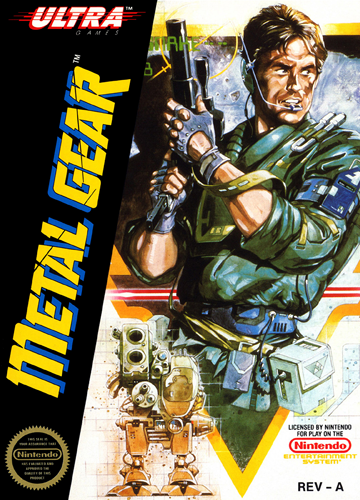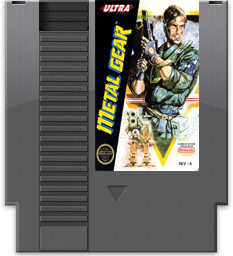

Metal Gear, developed and published by Konami in 1987, is a pioneering title in the stealth action genre. Initially released for the NES, Metal Gear revolutionized video game mechanics and storytelling, setting the stage for an iconic series that continues to captivate gamers to this day. In this review, we'll delve into the aspects that made Metal Gear a groundbreaking experience.
Year: 1987
Manufacturer: Konami
Genre: Platform
Rating: HSRS - GA (General Audience)
Graphics and Sound:
While the NES's graphical capabilities were limited, Metal Gear made the most of its resources. The environments, though simple, effectively conveyed a sense of danger and espionage. The character sprites were detailed enough to distinguish between enemy soldiers and allies, ensuring clarity during intense encounters. However, the standout element was the game's atmospheric soundtrack. From the memorable main theme to the tense melodies that played during infiltration, the music elevated the overall experience and added to the suspense.
Gameplay:
Metal Gear introduced a unique blend of action and stealth mechanics that were way ahead of its time. As Solid Snake, players were tasked with infiltrating enemy bases to stop the development and deployment of Metal Gear, a walking tank capable of launching nuclear weapons. The game emphasized strategic planning, observation, and evasion over straightforward combat, making it a refreshing departure from traditional action games.
The primary focus was on stealth, requiring players to navigate through enemy territory undetected. Using the radar to monitor enemy movements, players had to time their movements carefully, avoid searchlights, and hide in boxes or alcoves to avoid detection. The tension of avoiding patrols and evading capture was unparalleled at the time and still holds up remarkably well today. Instead of sending you back to the start screen, Metal Gear sent you to a save point. Many games like Far Cry and the Nathan Drake series use this technique today.
Metal Gear also featured a solid arsenal of weapons and equipment to aid Snake on his mission. From silenced handguns to explosives and a cardboard box that became an iconic stealth tool throughout the series, players had a range of options at their disposal. However, ammunition and supplies were limited, forcing players to strategize and make each shot count.
Storyline and Characters:
Metal Gear's engaging storyline, penned by Hideo Kojima, captivated players with its political intrigue, military conspiracy, and memorable characters. The narrative unfolded through dialogue exchanges with Snake's commanding officers and radio conversations with allies, adding depth to the experience. The enigmatic antagonist, Big Boss, and Snake's allies, such as Gray Fox and Dr. Pettrovich Madnar, left a lasting impression and set the stage for future installments in the series.

Conclusion:
Metal Gear for the NES was a groundbreaking title that revolutionized the stealth action genre. Its innovative gameplay mechanics, memorable characters, and suspenseful atmosphere set the foundation for one of gaming's most celebrated franchises. While the NES version may lack some of the refinements and complexities found in later iterations, it remains a testament to the visionary design and engrossing storytelling that defined Metal Gear. If you're a fan of stealth games or curious about the origins of the Metal Gear series, this NES classic is an essential piece of gaming history worth experiencing.
Explore in-depth reviews and analyses of classic Nintendo Entertainment System (NES) games, including gameplay mechanics, graphics, sound, and overall nostalgic experience.